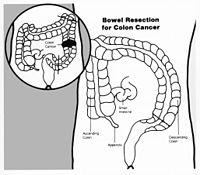
Photo from wikipedia
A 68-year-old woman was referred to our clinic for evaluation of endoscopic resection of a flat polyp on the ileocecal valve. The initial colonoscopy showed a flat colonic adenoma, Paris… Click to show full abstract
A 68-year-old woman was referred to our clinic for evaluation of endoscopic resection of a flat polyp on the ileocecal valve. The initial colonoscopy showed a flat colonic adenoma, Paris IIa 2 ×2 cm, on the distal lip of the ileocecal valve (▶Fig. 1). Owing to the non-lifting character after endoscopic submucosal injection, we decided to perform endoscopic fullthickness resection (EFTR). Colorectal endoscopic submucosa dissection (ESD) is an effective alternative to EFTR; however, ESD in the cecum is associated with a higher risk of perforation and delayed bleeding [1, 2]. During EFTR we used a novel stenting technique in order to secure the ileocecal valve orifice (IVO), and to optimize orientation and visualization. We first placed a Jagwire (Boston Scientific, Marlborough, Massachusetts, USA) through the working channel of a colonoscope, which allowed insertion of a double-pigtail catheter (7 Fr; MTW-Endoskopie W Haag Kg, Wesel, Germany) into the IVO (▶Video 1). After marking the resection boarders with coagulation current (Erbe, Tuebingen, Germany), the resection was performed using the EFTR System (Ovesco, Tuebingen, Germany) by using the high cut mode (Erbe Endo Cut Q; effect: setting 1; cutting duration: setting 4; cutting interval: setting 1). The 3×3 cm resected specimen was pinned onto a cork plate and sent for pathological assessment. At the end of the procedure (▶Fig. 2), the double-pigtail catheter was extracted from the ileocecal valve using the biopsy forceps. The histopathological evaluation revealed an adenoma with low grade intraepithelial neoplasia and microscopic complete resection (R0). After endoscopic resection, no complications occurred, and the patient could be discharged from the hospital after 3 days. In conclusion, this new technique can be considered a safe procedure for EFTR close to the ileocecal valve region to optimize visibility [3, 4] and prevent accidental closure of the IVO by the macroclip.
Journal Title: Endoscopy
Year Published: 2023
Link to full text (if available)
Share on Social Media: Sign Up to like & get
recommendations!